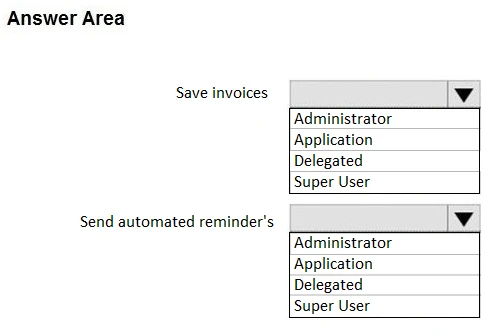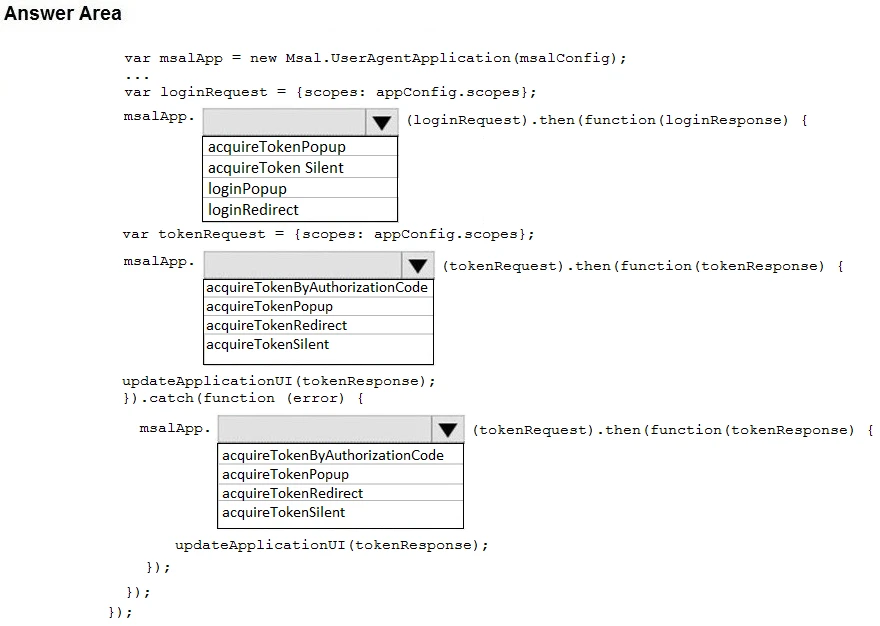Box 1: loginPopup -
Box 2: acquireTokenSilent -
The pattern for acquiring tokens for APIs with MSAL.js is to first attempt a silent token request by using the acquireTokenSilent method. When this method is called, the library first checks the cache in browser storage to see if a valid token exists and returns it. When no valid token is in the cache, it sends a silent token request to Azure Active Directory (Azure AD) from a hidden iframe. This method also allows the library to renew tokens.
Box 3: acquireTokenPopup -
//AcquireToken Failure, send an interactive request.
Example:
userAgentApplication.loginPopup(applicationConfig.graphScopes).then(function (idToken) {
//Login Success
userAgentApplication.acquireTokenSilent(applicationConfig.graphScopes).then(function (accessToken) {
//AcquireToken Success
updateUI();
}, function (error) {
//AcquireToken Failure, send an interactive request.
userAgentApplication.acquireTokenPopup(applicationConfig.graphScopes).then(function (accessToken) { updateUI();
}, function (error) {
console.log(error);
});
})
}, function (error) {
console.log(error);
});
Reference:
https://github.com/AzureAD/microsoft-authentication-library-for-js/issues/339








